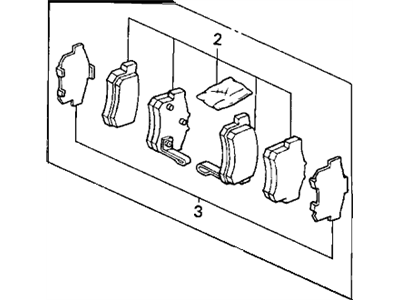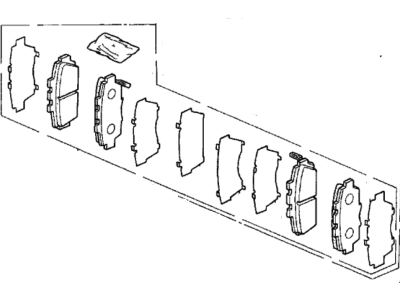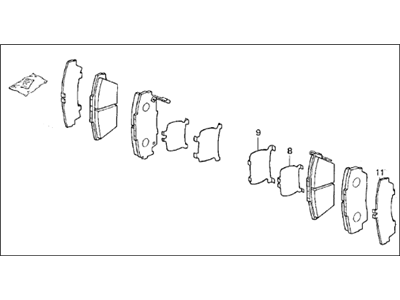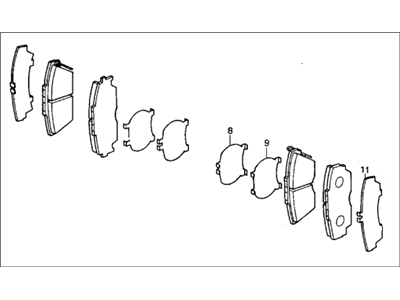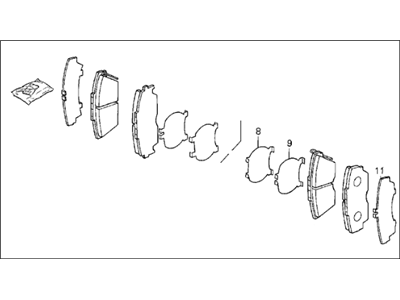×
- Hello
- Login or Register
- Quick Links
- Live Chat
- Track Order
- Parts Availability
- RMA
- Help Center
- Contact Us
- Shop for
- Acura Parts
- Acura Accessories

My Garage
My Account
Cart
Genuine Acura Legend Brake Pad Set
Disc Brake Pad Set- Select Vehicle by Model
- Select Vehicle by VIN
Select Vehicle by Model
orMake
Model
Year
Select Vehicle by VIN
For the most accurate results, select vehicle by your VIN (Vehicle Identification Number).
12 Brake Pad Sets found

Acura Legend Rear Acura Disc Brake pad Set
Part Number: 43022-SP0-030$65.53 MSRP: $91.40You Save: $25.87 (29%)Ships in 1-2 Business DaysAcura Legend Rear Disc Brake pad Set
Part Number: 43022-SV4-G23$71.52 MSRP: $99.75You Save: $28.23 (29%)Ships in 1-3 Business DaysAcura Legend Front Disc Brake pad Kit
Part Number: 45022-SM5-525$71.87 MSRP: $100.83You Save: $28.96 (29%)Ships in 1-3 Business Days
Acura Legend Brake Pad Set
We provide a broad range of OEM Acura Legend Brake Pad Set at unbeatable prices on our website. For your OEM parts, You can count on the guaranteed quality, manufacturer's warranty, outstanding customer service, and prompt delivery. We look forward to your visit.
Acura Legend Brake Pad Set Parts Questions & Experts Answers
- Q: How to replace rear brake pads with disc brakes on Acura Legend?A:Most models have disc brakes at the front and rear, while some Integra models feature rear drum brakes. The replacement procedure for rear brake pads involves several steps: first, remove the cap from the brake fluid reservoir, then loosen the rear wheel lug nuts, raise the rear of the vehicle, and support it securely on jack stands. Next, remove the rear wheels, working on one brake assembly at a time and using the assembled brake for reference if necessary. Inspect the Brake Disc carefully, and if machining is needed, follow the appropriate guidelines to remove the disc, allowing for the removal of calipers and pads. Before removing any components, spray the caliper and brake pads with brake cleaner to eliminate dust from brake pad wear. After completing these initial steps, apply a thin coat of disc brake anti-squeal compound on the backing plates of the new pads according to the manufacturer's recommendations, then install the shims onto their respective pads. If removed, install the pad retainers in the caliper mounting bracket, lubricating them with a thin film of silicone grease. Proceed to install the new pads and shims into the caliper mounting bracket, then retract the piston by engaging the tips of a pair of needle-nose pliers with two grooves in the top of the piston and turning it clockwise until it bottoms out. Rotate the piston out until one of its grooves aligns with the tab on the inner brake pad during caliper installation, adjusting the position as necessary. Install the caliper protector, followed by the wheel and lug nuts, lower the vehicle, and tighten the lug nuts to the specified torque. Finally, check the brake fluid level and add fluid if needed, then apply and release the brake pedal and hand brake lever several times to ensure the pads contact the brake discs, checking the operation of the brakes in a safe area before driving in traffic.


